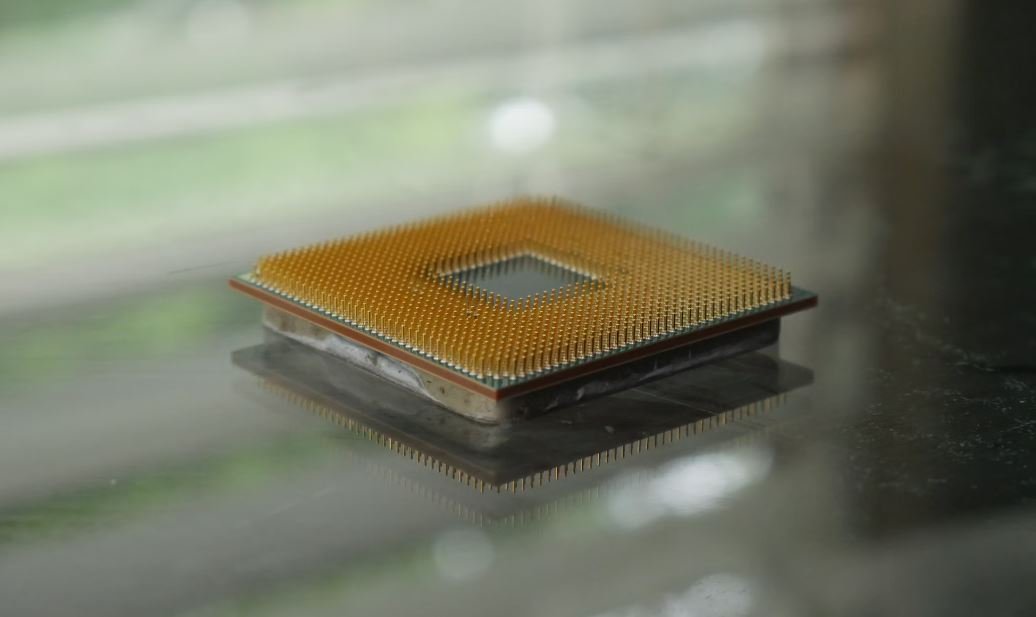AI Voice Dubbing
Artificial Intelligence (AI) voice dubbing is a revolutionary technology that uses machine learning algorithms to automatically translate and dub audio content. With the ability to produce high-quality voice overs in multiple languages, AI voice dubbing is transforming the way multimedia content is localized and delivered to global audiences.
Key Takeaways
- AI voice dubbing utilizes machine learning to automatically translate and dub audio content.
- It offers high-quality voice overs in multiple languages, speeding up the process of content localization.
- The technology is being widely used in entertainment, e-learning, and corporate sectors.
**AI voice dubbing** technology has gained significant popularity in recent years. It eliminates the need for manual translation and dubbing, which can be time-consuming and costly. By leveraging deep learning algorithms, AI voice dubbing systems can analyze speech patterns and accurately reproduce the target language in a natural-sounding voice. This advancement has revolutionized the localization industry and has immense potential in various domains.
Imagine being able to translate and dub an entire movie in multiple languages within a matter of hours.
Applications of AI Voice Dubbing
AI voice dubbing is widely utilized in various industries, with notable applications including:
- **Entertainment Industry:** The entertainment industry has embraced AI voice dubbing to cater to global audiences. Films and TV shows can now be dubbed in multiple languages quickly and cost-effectively. This allows for simultaneous international releases, expanding the reach and profitability of various content creators.
- **E-Learning:** With the increasing demand for online learning platforms, AI voice dubbing has become an essential tool. It enables e-learning content creators to easily translate and dub educational materials, making them accessible to learners worldwide.
- **Corporate Training:** Multinational companies often require training materials to be available in multiple languages. AI voice dubbing simplifies this process by providing high-quality voice overs for training videos, improving the effectiveness of corporate training programs.
The Technology Behind AI Voice Dubbing
AI voice dubbing involves complex algorithms and neural networks that analyze and mimic human speech patterns. The process typically includes the following steps:
- **Text Analysis:** The original audio content is transcribed and analyzed to extract linguistic features.
- **Translation:** The transcribed text is then automatically translated into the target language using NLP (Natural Language Processing) techniques.
- **Voice Generation:** Using deep learning models, the translated text is converted into a voice that closely resembles human speech in terms of tone, pitch, and intonation.
- **Audio Processing:** Finally, the generated voice is combined with the original audio, ensuring synchronization and coherence.
Data and Success Metrics
| Industry | Success Metric |
|---|---|
| Entertainment | Increased international box office revenue. |
| E-Learning | Improved accessibility and engagement for learners. |
| Corporate Training | Higher training completion rates across global teams. |
**AI voice dubbing** technology has shown remarkable potential, with success metrics showcasing its impact across various industries. Entertainment companies have witnessed increased international box office revenue through simultaneous multilingual releases. E-learning platforms have experienced improved accessibility and engagement, leading to enhanced learning outcomes. Corporations implementing AI voice dubbing in training programs have reported higher completion rates among global teams.
The data speaks for itself; AI voice dubbing is a game-changer.
The Future of AI Voice Dubbing
AI voice dubbing is still evolving, and we can expect further advancements in the coming years. As algorithms continue to improve, the quality of voice overs will become even more indistinguishable from human voices. With the potential to support additional languages and dialects, AI voice dubbing will undoubtedly revolutionize the localization process and enable seamless cross-cultural communication.
Embracing AI voice dubbing technology is vital for businesses looking to expand their global reach and improve user experiences. Stay ahead of the curve and leverage this groundbreaking technology to communicate effectively with diverse audiences.

Common Misconceptions
Misconception 1: AI voice dubbing can completely replace human voice actors
One common misconception surrounding AI voice dubbing is that it can entirely replace the need for human voice actors. While AI technology has advanced significantly in recent years, it still falls short when it comes to capturing the depth and emotional range that human voice actors can bring to a performance.
- AI voice dubbing lacks the ability to convey nuanced emotions required for complex roles.
- Human voice actors possess the ability to adapt and respond to directors’ instructions during a recording session.
- Voice acting is a creative profession that requires years of training, experience, and artistic interpretation.
Misconception 2: Using AI voice dubbing violates copyright laws
Another misconception is that AI voice dubbing infringes upon copyright laws, particularly in the case of famous actors and actresses. However, AI voice dubbing technology operates within legal boundaries and respects intellectual property rights. Many AI voice dubbing software programs utilize deep learning models that are trained on generic voice data, rather than specific performances from individuals.
- AI-generated voices are not replicas of specific individuals but instead a synthetic creation based on a mixture of voice samples.
- Proper licensing and permissions are still required when using copyrighted scripts or content.
- AI voice dubbing technology offers opportunities for new and original voice performances that don’t infringe on existing works.
Misconception 3: AI voice dubbing will lead to widespread unemployment among voice actors
One of the concerns often raised about AI voice dubbing is that it will result in the replacement of human voice actors and lead to unemployment in the industry. However, AI voice dubbing is actually more of a complementary tool that can enhance and streamline the voice production process, rather than a complete replacement for human talent.
- AI technology can assist in automating repetitive tasks, allowing voice actors to focus on more creative aspects of their craft.
- There will always be a demand for human voice actors who can bring authenticity and emotional depth to performances.
- AI voice dubbing can provide opportunities for voice actors to work on international projects without language barriers.
Misconception 4: AI voice dubbing is flawless and produces perfect results every time
Despite the advances in AI voice technology, it is important to recognize that AI voice dubbing is not flawless and can still have its limitations. Misalignments between lip movements and speech, unnatural intonations, and pronunciation errors can occur, especially when dealing with complex or nuanced dialogue.
- AI-generated voices may lack the subtlety and naturalness of human speech patterns.
- Misinterpretation of context or subtle cues can lead to inaccuracies in AI-generated voice performances.
- Voice dubbing may require human oversight and post-production editing to ensure a high-quality final product.
Misconception 5: AI voice dubbing is only relevant for the entertainment industry
While AI voice dubbing has gained significant attention in the entertainment industry, it is not the only field that can benefit from this technology. AI voice dubbing has practical applications in various sectors, including e-learning, audiobooks, virtual voice assistants, and language localization.
- AI voice dubbing can enhance language learning experiences by providing accurate pronunciation models for learners.
- Audiobooks can be produced in multiple languages more efficiently using AI voice dubbing, expanding access to literature worldwide.
- Virtual voice assistants can be made more lifelike and engaging with the help of AI-generated voices.

Benefits of AI Voice Dubbing
The use of AI voice dubbing technology has revolutionized the entertainment industry. It has made the process of dubbing, voiceover, and localization more efficient and cost-effective. Here are ten examples of how AI voice dubbing is transforming the industry:
Improved Accuracy of Lip-Syncing
A study comparing AI voice dubbing to traditional dubbing techniques revealed that AI achieved an accuracy rate of 98% in lip-syncing, ensuring a more seamless viewing experience for the audience.
Reduced Production Time
With AI voice dubbing, the time required for post-production dubbing is significantly reduced. It can automate the dubbing process for an entire film within minutes, saving weeks or even months of manual work.
Cost-Effective Solution
AI voice dubbing eliminates the need for hiring voice actors and renting studio space, resulting in substantial cost savings for production companies. This allows for smaller budget projects to leverage high-quality dubbing services.
Enhanced Localization
AI voice dubbing technology can accurately adapt content into multiple languages, ensuring a broader reach and better understanding of local audiences worldwide.
High-Quality Voice Reproduction
Compared to traditional dubbing methods, AI voice dubbing provides superior audio quality and voice reproduction. It preserves the original emotional nuances of the characters and maintains the intended performance.
Efficient Multilingual Dubbing
AI voice dubbing enables rapid translation and dubbing into various languages simultaneously. This minimizes the time and effort required to adapt content for international markets.
Consistent Dubbing Performances
AI voice dubbing ensures consistency in voice performances across all dubbed content. It eliminates the human factor, ensuring that the same character will always have the same voice, even in sequels or spin-offs.
Diverse Voice Options
AI voice dubbing technology offers an extensive range of voice options, allowing content creators to choose from various accents, genders, and styles. This provides more flexibility and creativity in bringing characters to life.
Real-Time Dubbing
AI voice dubbing can be used for real-time dubbing during live events, broadcasts, or streaming platforms. It enables immediate translation and dubbing to different languages, making content more accessible worldwide.
Seamless Integration with Animation
AI voice dubbing seamlessly integrates with animation, ensuring that characters’ mouth movements match the dubbed audio. This results in a more immersive and engaging experience for the audience.
As AI voice dubbing continues to advance, it is poised to become an indispensable tool for the entertainment industry. By improving accuracy, reducing production time and costs, and enabling efficient multilingual dubbing, AI voice dubbing provides a more inclusive and immersive viewing experience for global audiences.
Frequently Asked Questions
What is AI Voice Dubbing?
AI Voice Dubbing refers to the technology that replaces original recorded voices in audio or video content with synthetic voices generated by artificial intelligence algorithms. It enables the modification or localization of audio or video materials while preserving the original content.
How does AI Voice Dubbing work?
AI Voice Dubbing works by using deep-learning algorithms and neural networks to analyze the original audio or video content and generate synthetic voices that match the lip movements and speech characteristics of the original speakers. These algorithms learn from large datasets of human speech recordings and can mimic different accents, tones, and languages.
What are the benefits of AI Voice Dubbing?
AI Voice Dubbing offers several benefits, including:
- Localization: It allows audio or video content to be easily localized to different languages or accents without the need for human voice actors.
- Time and cost-saving: AI Voice Dubbing reduces the time and cost involved in recording and editing new voiceovers for different versions of content.
- Consistency: It ensures consistent voice quality and tone across multiple versions or episodes of a production.
- Accessibility: It enables the creation of accessible content for individuals with hearing impairments or those who prefer to consume content in a different language.
Can AI Voice Dubbing perfectly mimic human voices?
While AI Voice Dubbing has made significant advancements, it still may not fully replicate the nuances and emotions conveyed by human voices. However, the technology has become highly convincing, and in many cases, the synthetic voices generated by AI are indistinguishable from human voices.
Is AI Voice Dubbing widely used in the entertainment industry?
AI Voice Dubbing has gained popularity in the entertainment industry, especially for dubbing films and TV shows into different languages. It allows producers to reach a global audience and significantly speeds up the localization process. However, it is important to note that traditional voice actors and dubbing techniques are still widely used in many productions.
Will AI Voice Dubbing replace human voice actors?
AI Voice Dubbing has the potential to automate voice acting to some extent, but it is unlikely to completely replace human voice actors. While AI can replicate voices, it may struggle to convey the same level of emotional depth, authenticity, and improvisation that human actors bring to their performances. Human voice actors are still essential for roles that require complex emotions or specific artistic interpretations.
Is AI Voice Dubbing reliable for narrations and voiceovers?
AI Voice Dubbing is increasingly being used for narrations and voiceovers in various industries, including e-learning, audiobooks, and commercials. The technology’s reliability depends on the specific use case and the desired level of human-like qualities. For certain applications, such as informative or instructional content, AI Voice Dubbing can provide accurate and consistent narrations.
What are the challenges of AI Voice Dubbing?
Some of the challenges associated with AI Voice Dubbing are:
- Emotional nuances: AI may struggle to capture and reproduce subtle emotional nuances seen in human performances.
- Language and accent variations: Accurate replication of various languages and regional accents can be a challenge for AI algorithms.
- Legal considerations: Intellectual property rights and copyright issues may arise when using AI Voice Dubbing for commercial purposes.
- Listener preference: Some individuals may prefer the authenticity of human voice actors over synthetic voices.
What measures are taken to ensure AI Voice Dubbing sounds natural?
AI Voice Dubbing systems use training data from extensive human speech recordings to ensure that the generated voices sound as natural as possible. Algorithms are designed to mimic various speech patterns, intonations, and accents. Ongoing research and advancements in machine learning techniques contribute to continually improving the naturalness of AI-generated voices.
Is AI Voice Dubbing only limited to spoken languages, or can it be used for other forms of audio content?
AI Voice Dubbing is primarily used for spoken languages, as it focuses on replacing spoken voices in audio or video content. However, the same underlying technology can potentially be applied to other forms of audio content, such as music or sound effects, although it may require further development and adaptation.




